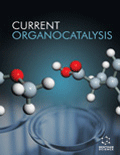
Full text loading...
We use cookies to track usage and preferences.I Understand
Biotransformation is a powerful process for producing steroid compounds, and fungi are commonly regarded as effective biological agents for this purpose. They facilitate reactions that are difficult to perform via conventional chemical methods.
In the current study, the ability of Penicillium aculeatum to biotransform progesterone was studied.
Forty-eight hours after the incubation of active P. aculeatum with substrate (progesterone), the reaction medium was extracted and chromatography methods isolated metabolites. The chemical structures of the products were characterized by various spectroscopic techniques.
Two main hydroxylated products, 14α-hydroxyprogesterone, and 7α,14α-dihydroxyprogesterone, were finally identified.
P. aculeatum may be considered a functional biocatalyst for some biotransformation processes.

Article metrics loading...

Full text loading...
References


Data & Media loading...
Supplements

